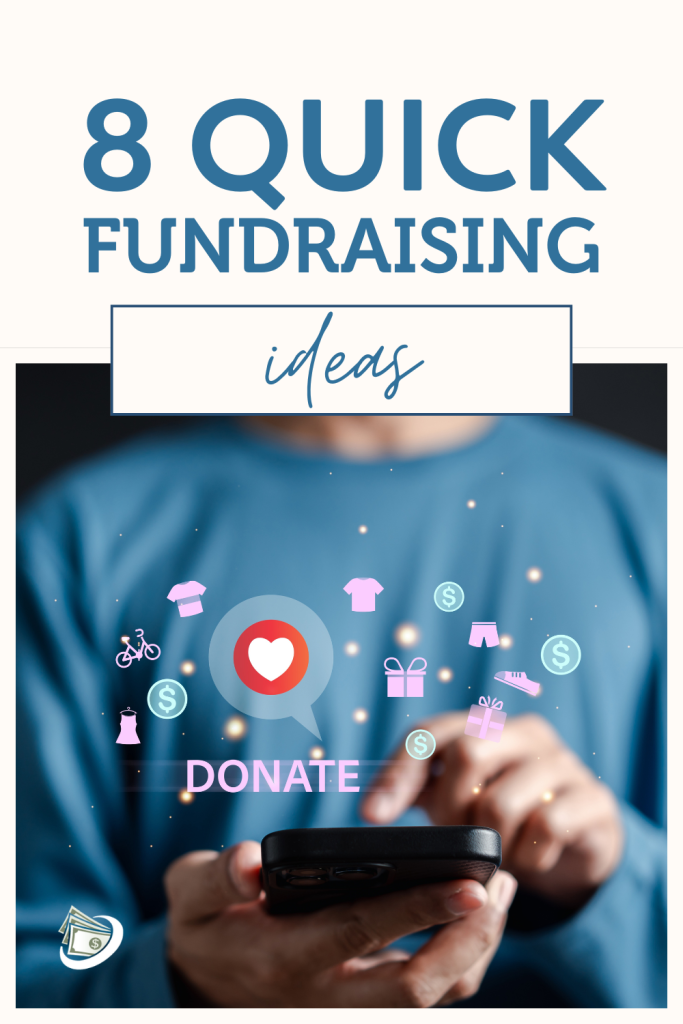Running a nonprofit can be hard at the best of times, but recent trends have made some things extra challenging. Membership numbers are dropping in many organizations, and grants have become much harder to secure. For volunteer teams who are already stretched thin, the thought of organizing an elaborate fundraiser might be hard to stomach.
The good news is that effective fundraising doesn’t necessarily require extensive planning and resources. Here are eight quick fundraising ideas that get meaningful results without any complicated logistics.
The “no fundraiser” fundraiser

1. Annual giving campaign
Skip the candy sales and special events—just ask for what you need. Send out a letter at the beginning of your fiscal year explaining your financial needs and requesting direct donations. Remember to get specific. “Your $100 donation covers tools needed to learn math and reasoning skills in the classroom” works better than general appeals about achieving your fundraising goals.
2. Offer premium memberships
Add optional donation tiers to your existing membership structure. Instead of a flat $25 fee, offer $25 (basic), $50 (supporter), $100 (champion), and so on. If someone is already giving you money, it’s an easy way for them to contribute more. If you can create a public way of acknowledging your premium members, that can go a long way as an incentive.
Digital-first fundraising strategies
3. Social media donation posts
Use your existing Facebook or Instagram accounts strategically. A one-off post asking for donations with no additional context is likely to get lost. But including an ask with every post may fatigue your followers. Instead, consistently share content about the work your group does and show its impact, then occasionally add a specific call to action, e.g. “Help us do more of this work with a $20 donation. Use the link in our bio.”
4. Email newsletter or SMS appeals
Include a brief donation appeal in your regular communications instead of relying on separate fundraising emails and letters. When updating members about successful programs, be clear about how donations help. You can include a donation link in the newsletter itself, or a QR code if you send out printed newsletters.
5. Peer-to-peer asks
Training volunteers to make personal appeals to their networks is an easy fundraising idea, but it can be highly effective. Try setting an ambitious but achievable goal, like asking 20 friends for $20. You’re likely to see the best follow-through if you provide a simple script for them to use: “Hi [name], I volunteer with [organization] and we’re raising funds for [specific purpose]. Would you consider a $20 donation? Here’s the link.”
6. Virtual raffle or 50/50
If your state allows it, set up online ticket sales, promote through existing channels, and conduct drawings via live video. You can raffle off donated items from local businesses or run a 50/50 drawing where half the ticket sales go to the winner and half go to your organization. No tables or cash handling required, and you can reach a larger audience than you can at a local event. Check with your Secretary of State for regulations and requirements.
Learn how to avoid these 5 common compliance mistakes.
Partnership strategies
7. Sponsorship opportunities
Create simple sponsorship packages for local businesses. You might thank your sponsors in your newsletter, mention them on social media, or include their business cards at your events. Focus on businesses and restaurants whose values align with yours and offer clear packages with specific benefits.
8. Corporate matching
Many employers match charitable contributions dollar-for-dollar. Include information about corporate matching in your appeals and help supporters get the necessary paperwork. (Many employees don’t know these programs exist—a simple reminder can double their donations.)
Tips for successful quick fundraising
No matter what fundraising approach you take, you’ll be more successful if it’s easy for people to give. MoneyMinder’s payment tools allow you to easily set up donation forms, track contributions, and manage donor information in one place. And because the payer can choose how they want to pay, you don’t need to juggle multiple payment apps and platforms.
Once your fundraiser is underway, be sure to acknowledge every donation promptly and keep track of donor preferences for future appeals. Start with one or two approaches rather than trying everything at once. As you discover what works best for your organization, you can refine your approach over time. Remember, consistency beats complexity when it comes to fundraising!
 Connect your Venmo account to MoneyMinder PRO to directly download transactions, saving you time and effort. You just review the transactions to ensure they are properly categorized and fill out any required fields.
Connect your Venmo account to MoneyMinder PRO to directly download transactions, saving you time and effort. You just review the transactions to ensure they are properly categorized and fill out any required fields. Connect your Bank, Paypal and Square accounts to MoneyMinder PRO to directly download transactions, saving you time and effort. You just review the transactions to ensure they are properly categorized and fill out any required fields.
Connect your Bank, Paypal and Square accounts to MoneyMinder PRO to directly download transactions, saving you time and effort. You just review the transactions to ensure they are properly categorized and fill out any required fields. Connect your Bank, Paypal and Square accounts to MoneyMinder PRO to directly download transactions, saving you time and effort. You just review the transactions to ensure they are properly categorized and fill out any required fields.
Connect your Bank, Paypal and Square accounts to MoneyMinder PRO to directly download transactions, saving you time and effort. You just review the transactions to ensure they are properly categorized and fill out any required fields. Join It is a membership management service that helps businesses and nonprofits effectively sell, track, and grow their membership.
Join It is a membership management service that helps businesses and nonprofits effectively sell, track, and grow their membership. Connect your Bank, Square and PayPal accounts to MoneyMinder PRO to directly download transactions, saving you time and effort. You just review the transactions to ensure they are properly categorized and fill out any required fields.
Connect your Bank, Square and PayPal accounts to MoneyMinder PRO to directly download transactions, saving you time and effort. You just review the transactions to ensure they are properly categorized and fill out any required fields.